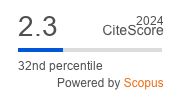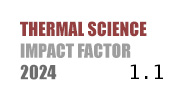ABSTRACT
Higher temperature and humidity will adversely affect the thermal comfort of helmet users. In order to improve the comfort level of the helmet and obtain an optimal cooling helmet model, four kinds of helmet models were established by using phase change material, heat-absorbing cooling technology, and fan cooling technology. Through the air conditioning system, the working states of four kinds of helmet models in the thermal environment of 30 ℃ were simulated, and the thermal comfort of four kinds of helmet models was evaluated. The results show that: high temperature environment is an important factor affecting the cooling effect of fan helmet fan, Under high temperature environment, the helmet with fan cooling technology has a certain cooling effect in the early stage, but after 30 minutes, the cooling effect becomes worse and worse. Under high temperature environment, phase change materials safety helmet has a good cooling effect, but poor ventilation results in the excreted sweat clinging to the scalp and hair, resulting in a poor user experience. There are defects in using phase change material heat absorption cooling technology or fan cooling technology alone. The helmet combines phase change material heat absorption cooling technology with fan cooling technology, so that the cooling effect and internal thermal environment stability of the helmet are the best, and the thermal sensation of human body is the best. Therefore, the helmet is an optimal design model.
KEYWORDS
PAPER SUBMITTED: 2020-05-21
PAPER REVISED: 2020-06-29
PAPER ACCEPTED: 2020-07-09
PUBLISHED ONLINE: 2020-09-12
THERMAL SCIENCE YEAR
2021, VOLUME
25, ISSUE
Issue 2, PAGES [891 - 900]
- Li, T., et al., New Cognition on the Prevention and Treatment Concept and Diagnostic Criteria of Heat Stroke, Chinese Health Standards Management, 36 (2016),
- Zhang, F., et al., Experimental Study on Cooling Performance of Cralsituation Mine Cooling Safety Helmet in Mines, China Individual Protective Equipment, 3 (2016), pp. 41-43
- Liang, G., et al., Development of a Cooling Safety Helmet Used in Mines, Coal Mine Modernization, (2014), 3, pp. 83-85
- Zhou, M., et al., Performance Test of Mine Thermal Protective Vest, Journal of Anhui University of Science and Technology (Natural Science Edition), 32 (2012), 2, pp. 29-34
- Steven, C., et al., An Adaptability Limit to Climate Change Due to Heat Stress, Proceedings of the National Academy of Sciences of the United States of America, 107 (2010), 21, pp. 9552-9555
- Li, J., et al., Heat Stroke: Typical MRI and (1)H-MRS Features, Clinical Imaging, 39 (2015), 3, pp. 504-505
- Rajendra, S. J., Sunil, K., Acute Vertebrobasilar Territory Infarcts Due to Heat Stroke, Journal of Stroke and Cerebrovascular Diseases, 24 (2015), 6, pp. 135-138
- Danie, C., Richard, H., Heat Stroke-Induced Sinoatrial Node Dysfunction, Journal of Emergency Medicine, 49 (2015), 2, pp. 143-146
- Chang, C. K., et al., Oxidative Stress and Ischemic Injuries in Heat Stroke, Progress in Brain Research, 162 (2007), 1, pp. 525-546
- Lee, C. W., et al., Multiple Organ Failure Caused by Non-Exertional Heat Stroke after Bathing in a Hot Spring, Journal of the Chinese Medical Association, 73 (2010), 4, pp. 212-215
- Dianne, S. W., et al., A Review of Heat Stress Research with Application Forestry, Applied Ergonomics, 29 (1998), 3, pp. 179-183
- Jwo, C. S., Chien, C. C., Solar Power-Operated Cooling Helmet, U. S. Patent, 200701376845A1, 2007
- Buist, R. J., Streitwieser, G. D., The Thermoelectrically Cooled Helmet, Proceedings, 7th International Thermoelectric Conference, Arlington, Tex., USA, 1988, pp. 88-94
- Cornelis, P. B., et al., A Review on Ergonomics of Headgear: Thermal Effects, The New York Times, 45 (2015), 2, pp. 1-12
- Ghani, S., et al., The Effect of Forced Convection and PCM on Helmets' Thermal Performance in Hot and Arid Environments, Applied Thermal Engineering, 111 (2017), Jan., pp. 624-637
- Tan, F. L., Fok, S. C., Cooling of Helmet with Phase Change Material, Applied Thermal Engineering, 26 (2006), 17, pp. 2067-2072
- Fok, S. C., et al., Experimental Investigations on the Cooling of a Motorcycle Helmet with Phase Change Material (PCM), Thermal Science, 15 (2011), 3, pp. 807-816
- Chelliah, A., et al., Helmet Cooling System Using Phase Change Material for Long Drive, Jonaurl of Engineering and Applied Sciences, 10 (2015), 4, pp. 1770-1773
- Jiang, X., et al., Design of Intelligent Temperature Control Fan Based on Micro-Programmed Control Unit, Technology Outlook, 13 (2016), 144
- Chen, X., et al., Thermal Comfort, Health and Environment, HVAC, 33 (2003), 4, pp. 55-57
- Fanger, P. O., et al., Thermal Comfort, Robert E. Krieger Publishing Company, Malabar, Fla., USA, 1982, Vol. 31
- Liu, X., Building Physics, Building Industry Press, Beijing, China, 2007, pp. 20-21
- Edward, A., et al., The Effect of High Level Air Humidity on Subjective Perception of Comfort, Proceedings, 2nd International Symposium on Heating, VentiLation and Air Conditioning, Beijing, China, 1995
- Toftum, X., et al., Upper Limit s for Indoor Air Humidity to Avoid Uncomfortably Humid Skin, Energy and Buildings, 28 (1998), 1, pp. 1-13

